How To Cook Every Pasta Dish In The World, with Hallie Meyer
Plus: Tips and tricks for homemade ice cream and banana bread

Photo Credit: Liz Clayman
Hallie Meyer’s Instagram account is the World Wide Web’s capital of pasta porn—and for years, I have been staring at the noods she posts, wondering how she makes them.
Hallie is best known as the wizard behind Caffè Panna, one of New York’s foremost purveyors of ice cream, affogato sundaes, and shots of espresso dolloped with Italian whipped cream—so I made sure to ask her for her tips and tricks on how to make ice cream at home. (When quarantine is over, go to Caffè Panna. It’s amazing.)
But I’ll be honest: The ice cream questions served as a Trojan Horse for me to get to the bottom of how Hallie makes the best looking pasta in the world.
Turns out, there’s no recipe, per se, for any of Hallie’s pasta, but she did share a method—dubbed the “Two Pot Method”—which is the secret to making delicious pasta with whatever’s at your home, as long as you have olive oil, salt, and, well, water.
Quarantine will last a few months, but the “Two Pot Method” will teach you how to make pasta for the rest of your life. So you won’t want to miss this letter.
The Two Pot Method for Pasta Making
Hallie: The same way you can put different mix-ins in ice cream, you can make a pasta out of anything.
Everyone asks, “Oh, what's the recipe?" but there’s not really a recipe for pasta. It’s all the same method.
Basically, with pasta, you build your sauce in one pan and you boil your pasta in the other pan. How you build your sauce might vary, but you always take the cooked pasta, you put it into the sauce pan along with a bunch of its water and more oil, and then you stir it like crazy. So a gloss forms on the outside of it. Then you finish the cooking process of the noodle in the sauce. And that is the secret to good pasta.
And you can literally do it with anything. I'm talking, like, cream cheese and ham pasta. Like, you can do that.
For example, we had sausage and broccoli the other night. With sausage, crumble it up and sear it in a big pot with olive oil, and then with broccoli, you probably want that to be soft—so boil it first and then crumble it up into the pot where the sausage is. That will become, like, the sauce.
How To Cook Carbonara Using the “Two Pot Method”
Hallie: So you're cooking the pasta in one pot, and then, in your other pot, you just put olive oil and pasta water and it makes this gooey kind of thing. And then you can put some black pepper in there if you just want to flavor it a little bit and get that coated onto the pasta.
And then you put the pasta into that boiling inch of pasta water and olive oil and then you toss it and toss it and toss it.
And then, in a separate bowl, you have egg yolk and pecorino and black pepper—which you’ve whisked together.
So you take the pasta off of the heat because you don’t want it to cook too much. And then you mix in that eggy sauce just like you'd mix in cheese off the heat.
And then, maybe you add like drizzles of olive oil and more cheese as you go—or more water. In order to get the gloss, you have to be mixing, mixing, mixing constantly.
And then, on the side, you've already rendered guanciale to be really crispy—and you could probably add some of the guanciale fat as you’re emulsifying the sauce onto the pasta. And then the guanciale is more like a topping. Or you can mix it in and have it hide inside the piece of rigatoni.
How to Choose Your Pasta Shape
Hallie: The shape depends on what the sauce is usually. So there are some of these rules in Italian cooking—like, unwritten but yes spoken rules. Like you never do carbonara with anything but spaghetti or rigatoni. It’s never going to be anything else. Amatriciana is only ever going to be bombolotti or bucatini. Cacio e Pepe should be tonnarelli.
I like to kind of like play around a little bit, but I also agree that, for something like the sausage and broccoli, you would want to be able to get a satisfying bite of whatever the pasta was in the bite with the sausage and broccoli. So, like, sausage and broccoli on a spoon, plus a spear of paccheri.
How To Make Ice Cream at Home
Hallie: For a good white base or sweet cream base, a simple recipe is just go one to one on cream and milk by weight. So, for example, start with 480g of cream and 480g of milk. And then, add two cups of cream and two cups of milk. And I would add, like, one cup of sugars total—and I would split that sugar between regular sugar and corn syrup.
I think the biggest tip in ice cream making is adding a solid to the base, which could be anything from more sugar to corn syrup to freeze dried fruit—anything that adds solid to it, because you want to get as much water out of ice cream as possible, cause water becomes ice. And ice cream at home can be really icy, since you might not have stabilizers or emulsifiers or xanthan gum on you.
If I wanted to make chocolate ice cream, on the side, I would make a vegan fudge sauce. So on the stove top, I’d mix water, cocoa, sugar, and a touch of corn syrup to bring it together—and then just whisk it together until it's like a sludge and a lot of water evaporates.
And then I’d put it in my ice cream base. And then, the only other thing you're missing is salt. And, if you have xanthan gum, add a pinch in with your sugar and disperse it. That will help with the scoopability of it and kind of like holding it together.
You can use a Cuisinart ice cream machine, which is like eighty dollars.
Editor’s Note: I think I found one for $63!
Why Oil Is The Key To Good Banana Bread
Hallie: I happen to be on my seventh loaf of banana bread right now—because we have all these bananas that are going bad.
My advice is: Use oil, not butter, which isn’t moist enough. You should still butter the pan—and you can use a pad of butter just if you like the taste or something. But for a loaf, I do two eggs in the mixer with a cup of sugar. And again, the cup of sugar can be a mix of brown and white or all white or all brown. And you could even put a little dash of maple syrup in it to make it darker.
I have three or four banana in the mixer. And then like three quarters of a cup-ish of oil—maybe a little bit less if you’re gonna do a pad of melted butter as well. And again, that's kind of just for flavor. Sort of like how, with pie crust, people use lard sometimes or butter sometimes for flavor.
And then, I add two cups of flour, a teaspoon each of baking soda and baking powder, and a teaspoon of salt, and then just mix it all together.
What Organization You Should Be Supporting Right Now
Hallie: In It Together NYC
Editor’s Note: In It Together was started by one of my best friends in the world, Alex Godin, who has spent the last few years serving family dinner to low-income New Yorkers through his non-profit, “Lemontree.” When COVID-19 hit, he realized that local banks and organizations like City Harvest were short on volunteers—so he launched In It Together, which is connecting New Yorkers with safe volunteering opportunities to feed their neighbors. If you want to fight hunger, or if you’re just in New York and want a morally justifiable reason to leave your home, sign up now at inittogether.nyc.
Homecooking Hacks
Since I started this newsletter, naturally, I have been sent *a lot* of pictures of food people have cooked during quarantine. Most of these pics are pedestrian looking loafs of bread, which I nonetheless respond to with this Mike Breen meme:

Editor’s Note: If you don’t know who Mike Breen is, I couldn’t imagine a better way to be introduced to him than his quarantine PSA:
But while most of the food pics I’m sent are ordinary, there’s consistently been one exception: Tyler Lechtenberg. He’s been sending me pics of the food his wife, Sara Rhodin, is cooking, and holy shit, look at this frittata:

All of her food looks this beautiful—and this delicious—so I asked her how she’s doing this, while juggling a newborn baby and Tyler’s desire to watch underdog sports movies, and here’s what she said:
1) Take inventory of your pantry. “Over the past few years, you’ve probably bought things you didn’t even realize you had,” she told me. So her advice is to dump everything out of the pantry, write down whatever you have left, and figure out what you can make with what you’ve got. (This is also how you’ll realize if you’re missing anything essential.)
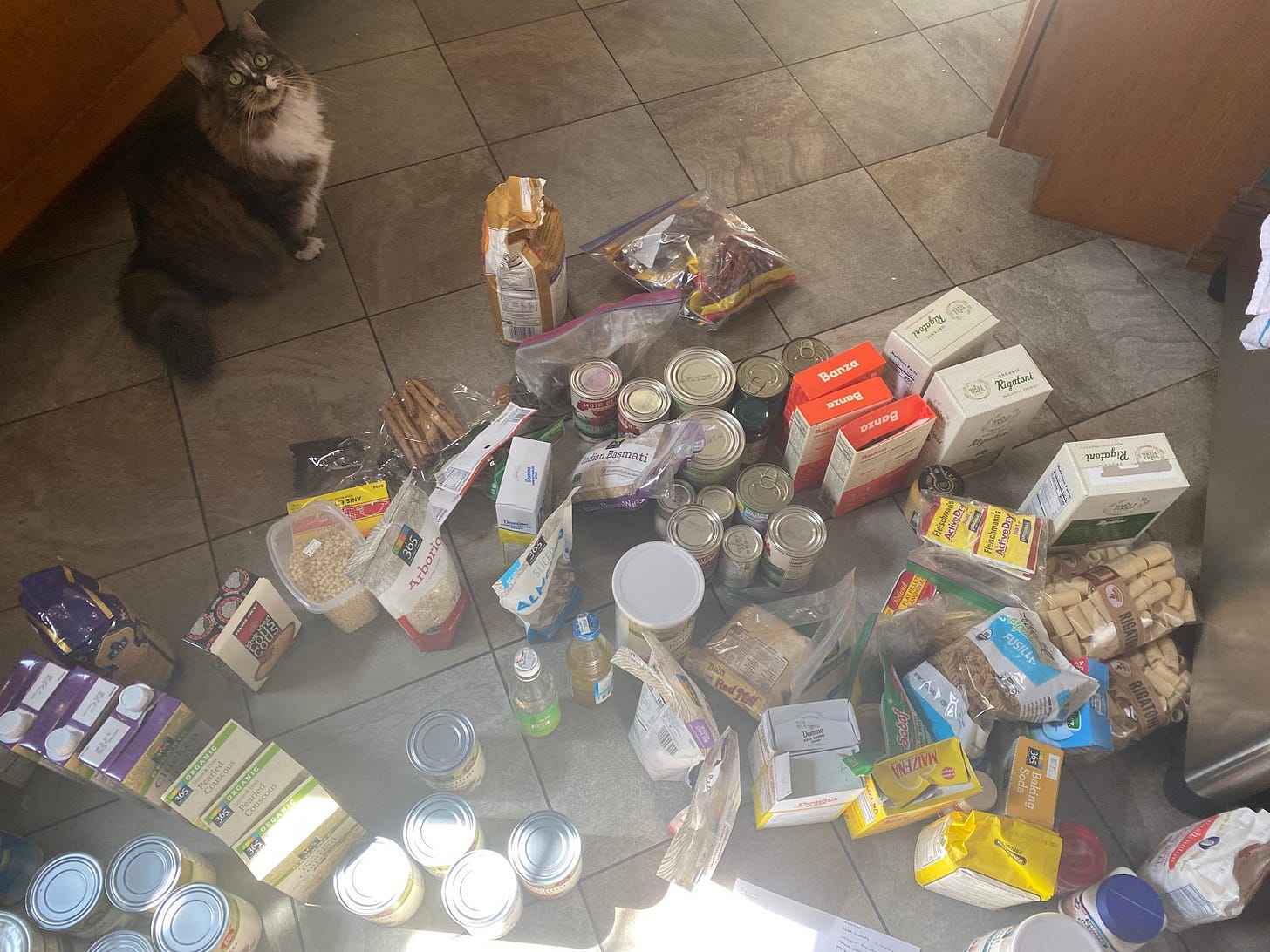
2) Stock up on eggs. “Eggs last a month and a half, so it’s not silly to buy a bunch of eggs,” she said. “You can use them for everything and they’re a great source of protein.”
3) Cook food from middle eastern countries, she advised, “because it’s made of a lot of stuff you might already have in your pantry.” Think: chickpeas, rice, and canned tomatoes as examples.
Sara has been using a 1976 Detroit Arab Women’s Union cookbook called “Sahtein.”
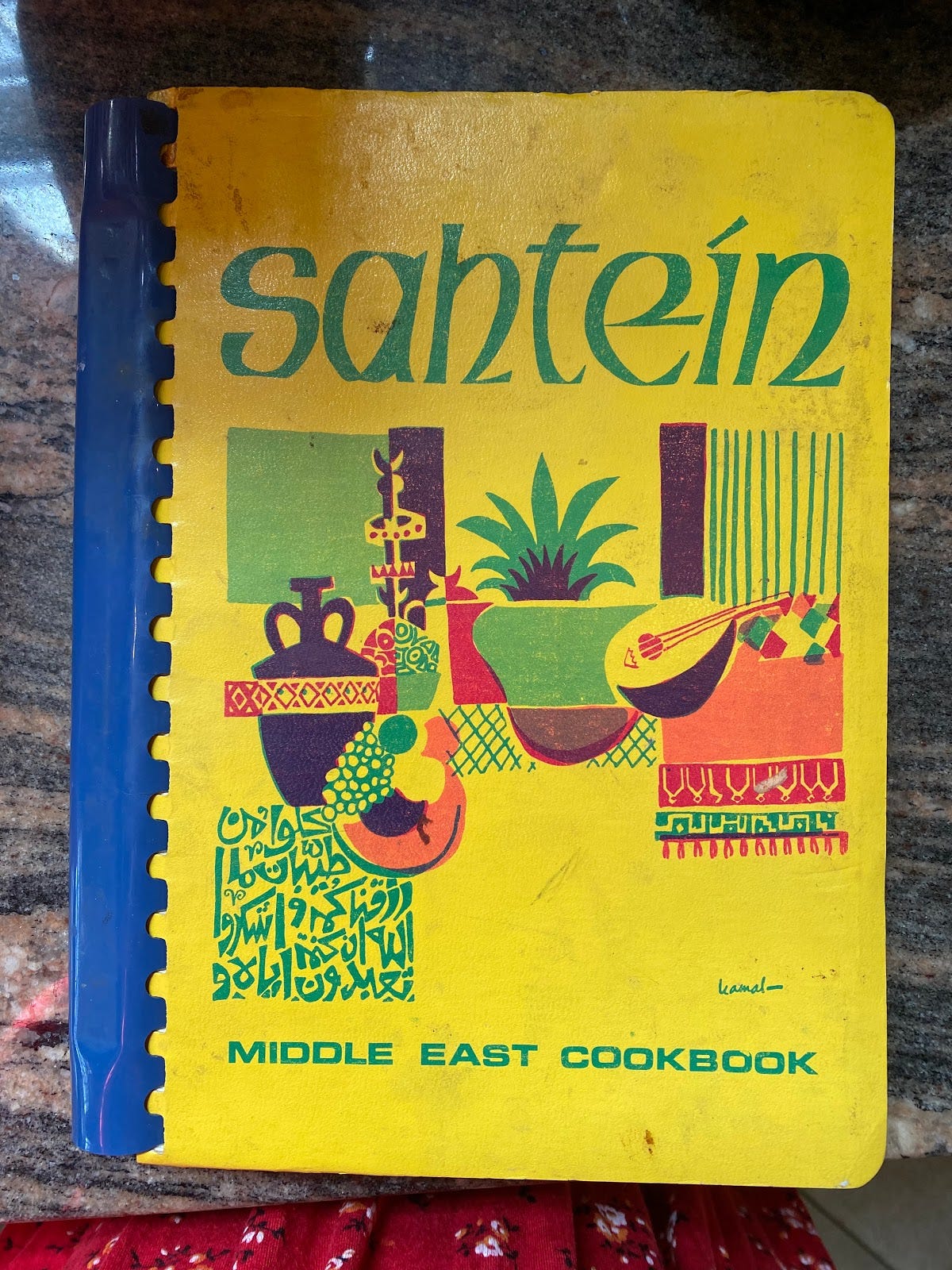
The book is out of print, but she kindly shared this recipe for eggplant makloubeh. She used chicken, not lamb, because that’s what she had, and she had a few other tips for adapting the 1976 recipe for 2020’s quarantine:
I added some cumin, celery, and onions when boiling the meat, and froze the extra broth. Also added more cumin, coriander, and za'atar when cooking the meat. Oh and I baked the eggplants at 400 for 30 mins, mostly for time's sake, and used canned tomatoes rather than the two fresh tomatoes. I threw some sliced almonds into the rice.
The book includes three different recipes, one with cauliflower, one with eggplant, and one with carrots. I made the eggplant one, but the other two are very similar and frozen cauliflower and carrots are easier to come by if you can't find any fresh eggplant.
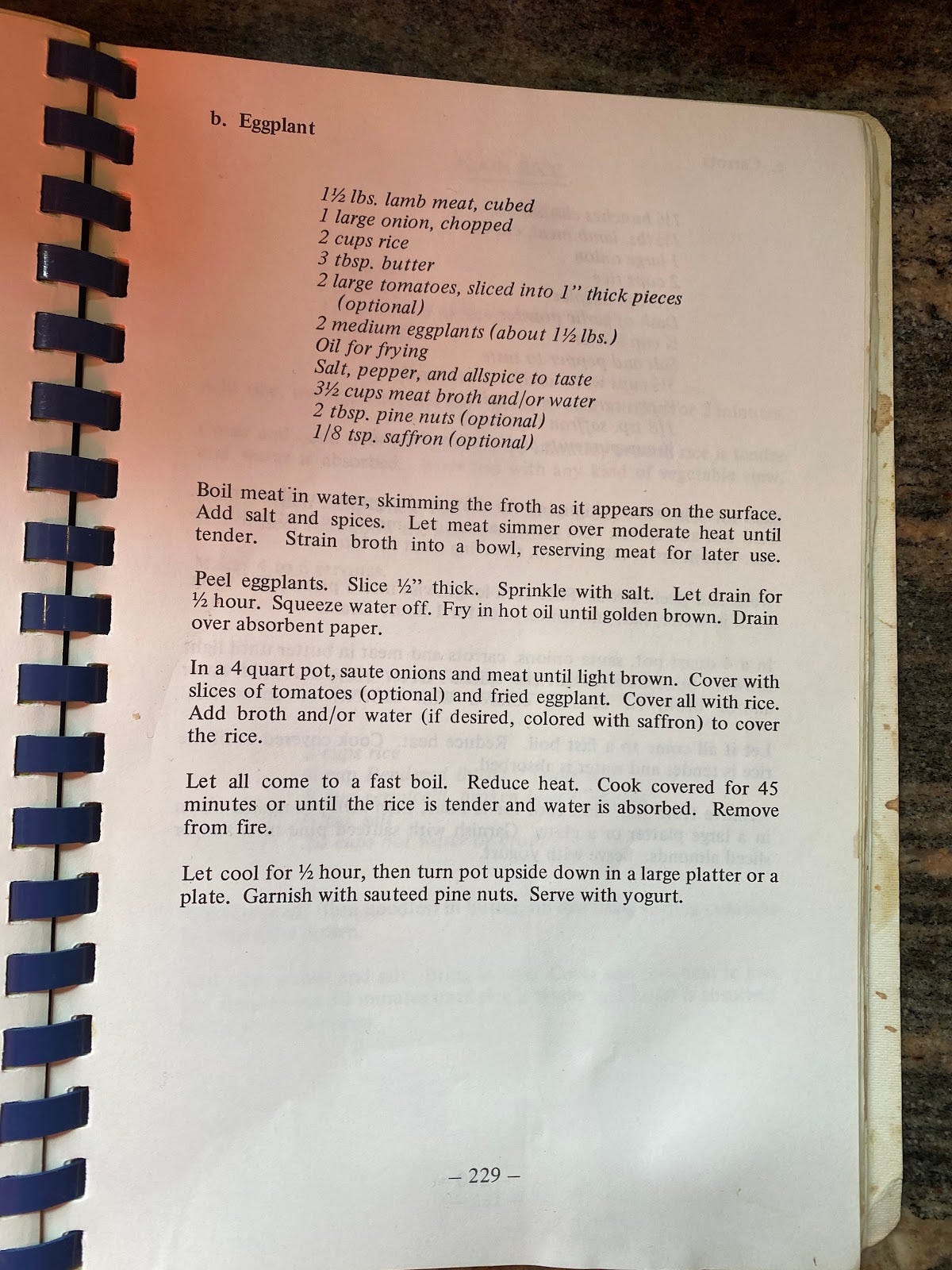
As if Sara weren’t busy enough with this, she’s also responsible for feeding her newborn. Thankfully, she says, “he only eats one thing and I can provide it.”
Bonus Recipe: Frozen Cauliflower Rice Paella With Tinned Seafood
That headline might sound disgusting, but desperate times call for desperate measures—and everything Will Magliocco cooks is delicious. So, take my word for it: If you follow this recipe, you will be happy.
Heat some olive oil in a saucepan over low heat. Crush a clove (or more, depending on how much you’re making) of garlic into the saucepan. Add dried thyme, crushed red pepper, and fennel seed. Blooming aromatics in oil like this is an important step, because it imbues the whole dish with these flavors down the line. If you add aromatics to a dish at the very end when you season, you’re only going to pick up the flavor here and there. The fennel seed especially is very, very fragrant, so don’t add too much.
After blooming the aromatics, add onion, cut into strands/ribbons. Turn up the heat so you can get color on the onion. Add some salt to help the onion expel all its moisture. This is a good time to add liquids that can contribute body — squid ink from tinned calamari, maybe a little bit of white wine, especially if you’re adding clams down the road.
Add frozen cauliflower rice. As the cauliflower defrosts, add a little more salt to help the cauliflower expel more moisture. Mix.
Towards the end of cooking, add your tinned seafood — cockles, mussels, calamari, octopus. maybe even sardines. Two important things here: first, if the seafood is preserved in a lot of brine/pickling liquid, rinse it before adding; second, add the seafood at the very end only to heat it. This seafood is precooked and will get tough very quickly if overcooked. Another nice thing to add at this stage would be some cut up cooked and jarred red bell pepper.
Serve!
“Blooming the aromatics” is the weirdest term I’ve ever heard for smoking weed, but if Will says to do it, I’d trust him.
Until next time...




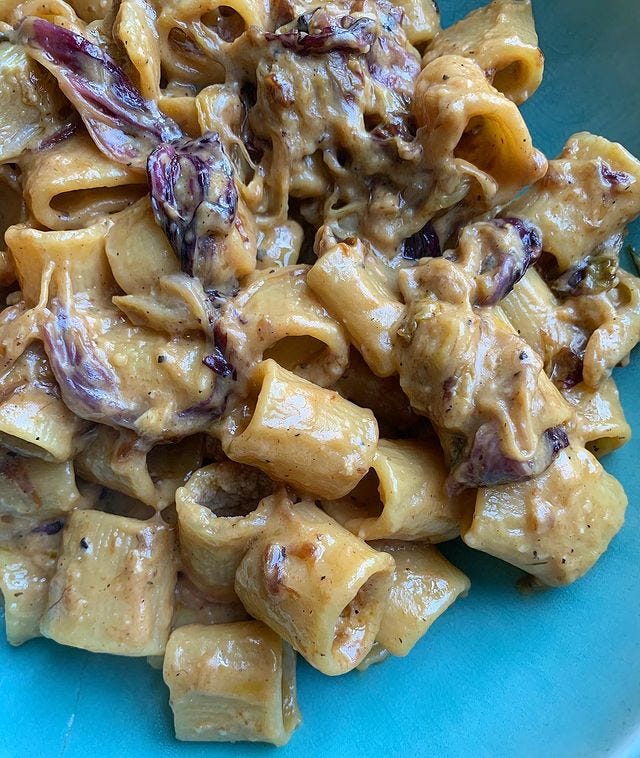





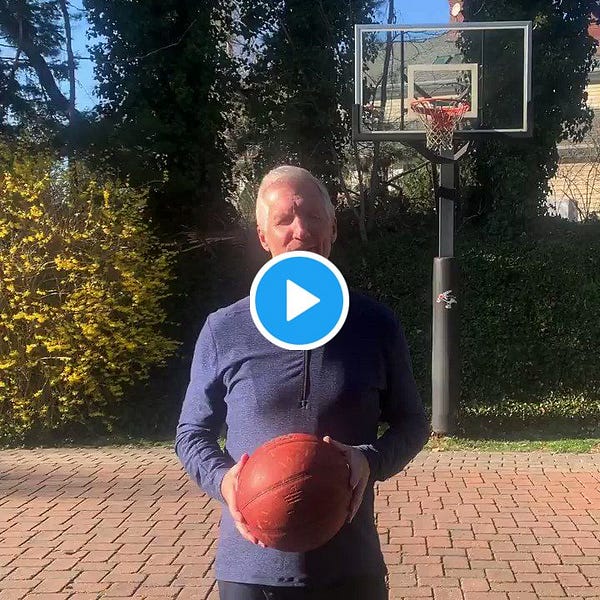
Ha! This is a rough morning read. Now I'M read to eat pasta for breakfast. Wait, I always was. I made Clara's depression Italian Ice and it's all I ever want to eat as a treat now. It keeps in the freezer and is so refreshing. https://cassie.substack.com